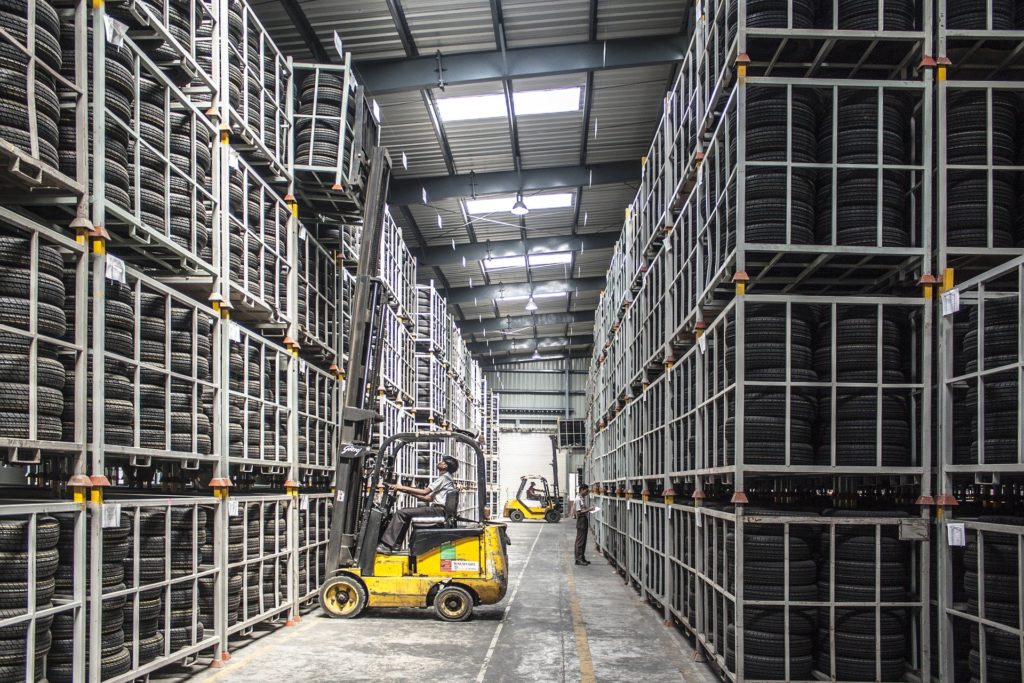National Forklift Safety Day

Today is National Forklift Safety Day – that’s a good thing. Forklift safety is critical to the efficient operation of the infrastructure of America. Indeed, there are tens of thousands of forklifts in warehouses and stores and similar locations throughout the United States. But despite the industry’s claimed interest in safety, when it comes to rear entry side stance standup forklifts, the industry is more about maintaining the status quo than providing safe fork trucks.
In a rear entry side stance standup forklift, the operator’s left foot is very close to the rear edge of the operator’s compartment. These trucks are usually operated with the forks trailing. This means that the operator’s left foot is at the very front of the moving forklift. The most common mishap for a standup forklift is a collision with a rack, post, or another forklift. Indeed, virtually every forklift has scrapes and dents at the rear end evidencing the numerous collisions that are daily occurrences. While the vast majority of these collisions are benign, and just part of the life of a forklift operator, once in a while there is an unintended collision from a loss of control or some kind of emergency event. Too often in these events the operators lose their balance. When they do so, their left foot, which was mere inches from the edge of the forklift, gets between the forklift and a stationary object. The result is a catastrophic crushing injury typically followed by a below the knee amputation of the operator’s left leg. These left foot crush injuries are the most common injuries suffered by standup forklift operators.
This kind of tragic event likely happens weekly – if not more often. One major manufacturer admits that it is aware of not less than one a month for every month in this entire Century. Surely that manufacturer does not know about all of the injuries. Other manufacturers collectively have at least as many. Thus, the idea that one operator a week, or more, suffers a disfiguring life-changing injury is well supported by the data. Think about it – at least one worker a week is losing the ability to walk as a result of the use of these machines.
The reason for these injuries is simple. The machines fail to include a safety feature that has a perfect record at preventing left foot crush injuries. That device is not complicated or expensive to make –it’s just a safety door that will provide the operator with a physical barrier, a visual reminder of the confines of the forklift, and a tactile stimulus to discourage the operator’s left foot from traveling into harm’s way. Safety doors on standup forklifts have been used successfully at warehouses throughout the United States. But despite a perfect safety record, manufacturers refuse to make them standard equipment. They actually discourage their use.
The reason manufacturers discourage safety doors is the oldest reason in the world – money. There are hundreds of thousands of standup forklifts that do not have doors. If the industry acknowledges the need for doors as necessary safety features, someone will have to pay for the retrofits. The industry has simply decided that it would rather defend lawsuits than accept responsibility and repair all of these machines. But the industry does not merely refuse to accept responsibility, it actively discourages the use of doors by telling its warehouse customers that doors are dangerous. According to the industry, relying on data its paid litigation experts created to defend lawsuits, a door might delay someone from exiting the forklift in the event of an off dock or tipover event. This reason has three problems. First, there is no evidence to support an argument that there is a material delay caused by a properly designed door. Testing consistently shows delays in the thousands of a second range. Second, even if a safety door did cause an egress delay, the data demonstrates that operators who stay on forklifts do quite well. It’s operators who try to jump off and get crushed who suffer horrible injuries. Third, thanks to trailer retention devices and other safety programs that are widely used off dock events are exceedingly rare and even if a door made the more dangerous the tradeoff for every day safety would be well worth it.
National Forklift Safety Day. A great idea. But it’s time for the industry to live up to these words and put safety concerns ahead of money concerns. Tens of thousands of workers are at risk of losing a leg. There is a better way.



